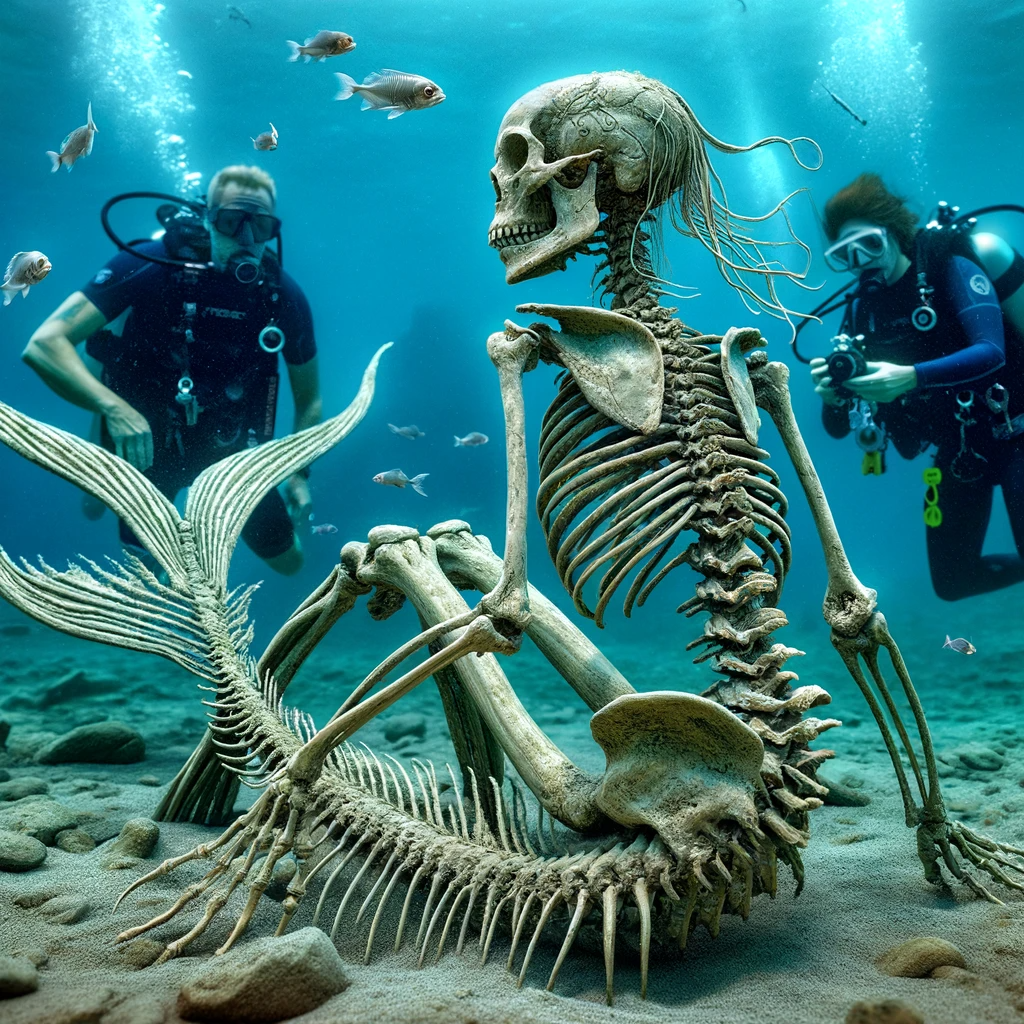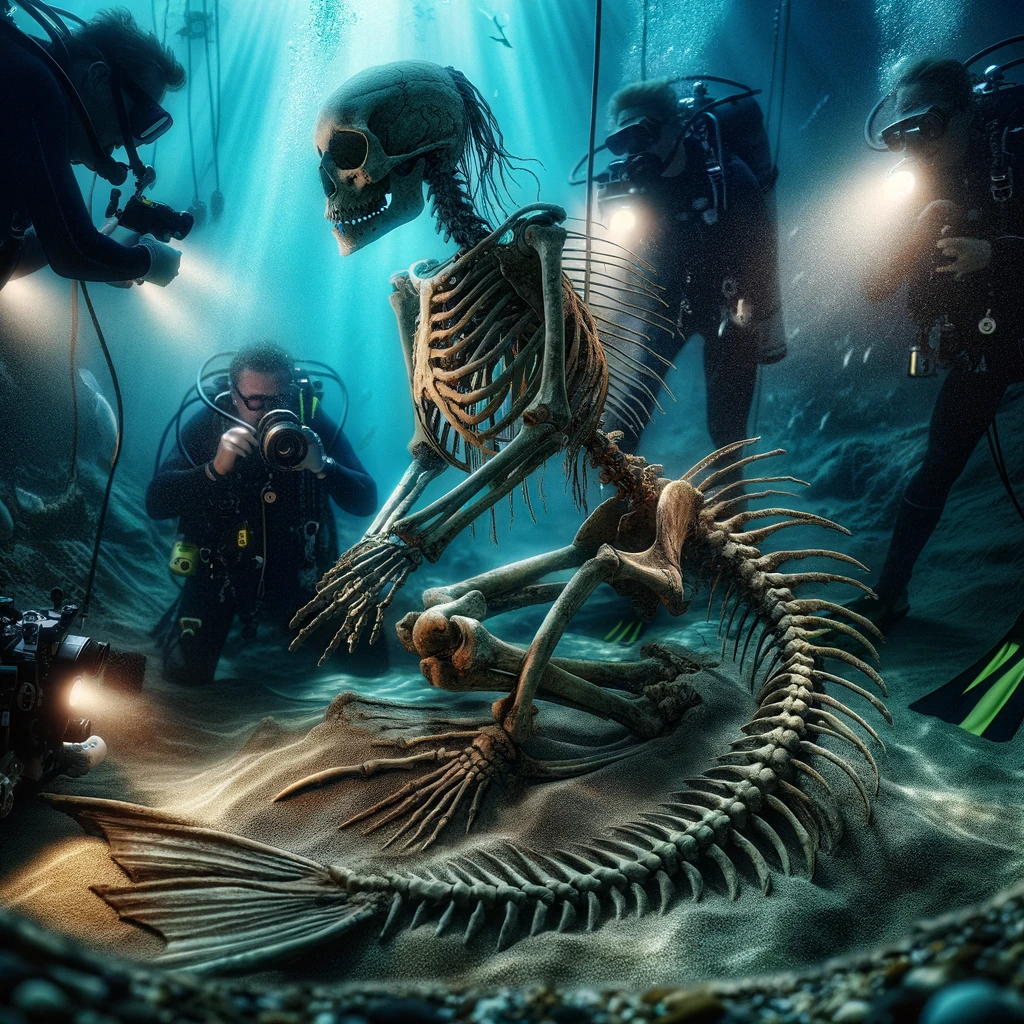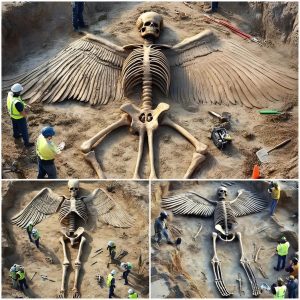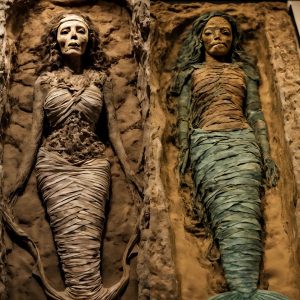In the murky depths of our planet’s oceans, an extraordinary discovery has set the scientific community abuzz: the underwater remains of creatures suspected to be alien mermaids. This fascinating revelation opens up a Pandora’s box of possibilities, challenging our understanding of marine biology, extraterrestrial life, and the boundaries of science fiction and reality.
A Remarkable Discovery
The journey to this groundbreaking find began with a routine deep-sea exploration off the coast of Norway. Utilizing advanced submersibles and cutting-edge sonar technology, marine biologists aimed to study the ocean floor’s biodiversity. However, what they unearthed was far beyond their wildest imaginations. Resting on the seabed, partially encrusted with marine sediment, were skeletal remains unlike anything seen before.
The Mermaids’ Anatomy
The skeletal structures exhibited features that were both familiar and otherworldly. The upper bodies resembled human anatomy, with a ribcage, spine, and even a cranium, albeit larger and more elongated. However, the lower halves were distinctly piscine, with structures similar to those found in large fish or cetaceans. This peculiar combination has led to the term “alien mermaids,” blending the mythical with the extraterrestrial.

Scientific Scrutiny
The discovery has not been without controversy. Skeptics argue that the remains are simply an unknown species of deep-sea creatures or even a hoax. However, preliminary DNA analysis suggests otherwise. The genetic material recovered from the remains does not match any known species on Earth, hinting at an origin that could be extraterrestrial. Further analysis and peer-reviewed studies are needed to substantiate these claims, but the initial findings are promising.
Implications for Extraterrestrial Life
If these creatures are indeed of alien origin, it could imply that life exists beyond our planet and that Earth may have been visited by extraterrestrial beings in the distant past. This discovery could support the panspermia hypothesis, which suggests that life on Earth may have originated from microorganisms or chemical precursors of life present in outer space.
The Mythology Connection
Interestingly, this discovery also reignites interest in ancient mythology and folklore. Tales of mermaids have been prevalent across cultures for centuries. Could these legends be based on encounters with such creatures? The similarities between the descriptions of mythical mermaids and the skeletal remains are too striking to ignore.
Future Explorations
The scientific community is gearing up for further underwater excavations and more in-depth studies. Collaborative efforts between marine biologists, archaeologists, and astrobiologists are essential to uncover the mysteries surrounding these remains. Future missions will focus on mapping the surrounding area, searching for more remains, and understanding the environmental conditions that might have supported such life forms.

Public Fascination
The public’s fascination with this discovery is palpable. Social media platforms are flooded with theories, speculations, and a renewed interest in ocean exploration. This discovery has also spurred debates on ethical considerations regarding the handling and study of such remains, given their potentially profound implications.
Conclusion
The excavation of suspected alien mermaid remains is a landmark event that blurs the lines between science fiction and reality. While the full story behind these remains is still unfolding, the potential implications for our understanding of life, both terrestrial and extraterrestrial, are immense. As scientists continue to explore the depths of our oceans, who knows what other secrets lie hidden, waiting to reshape our understanding of the universe?





